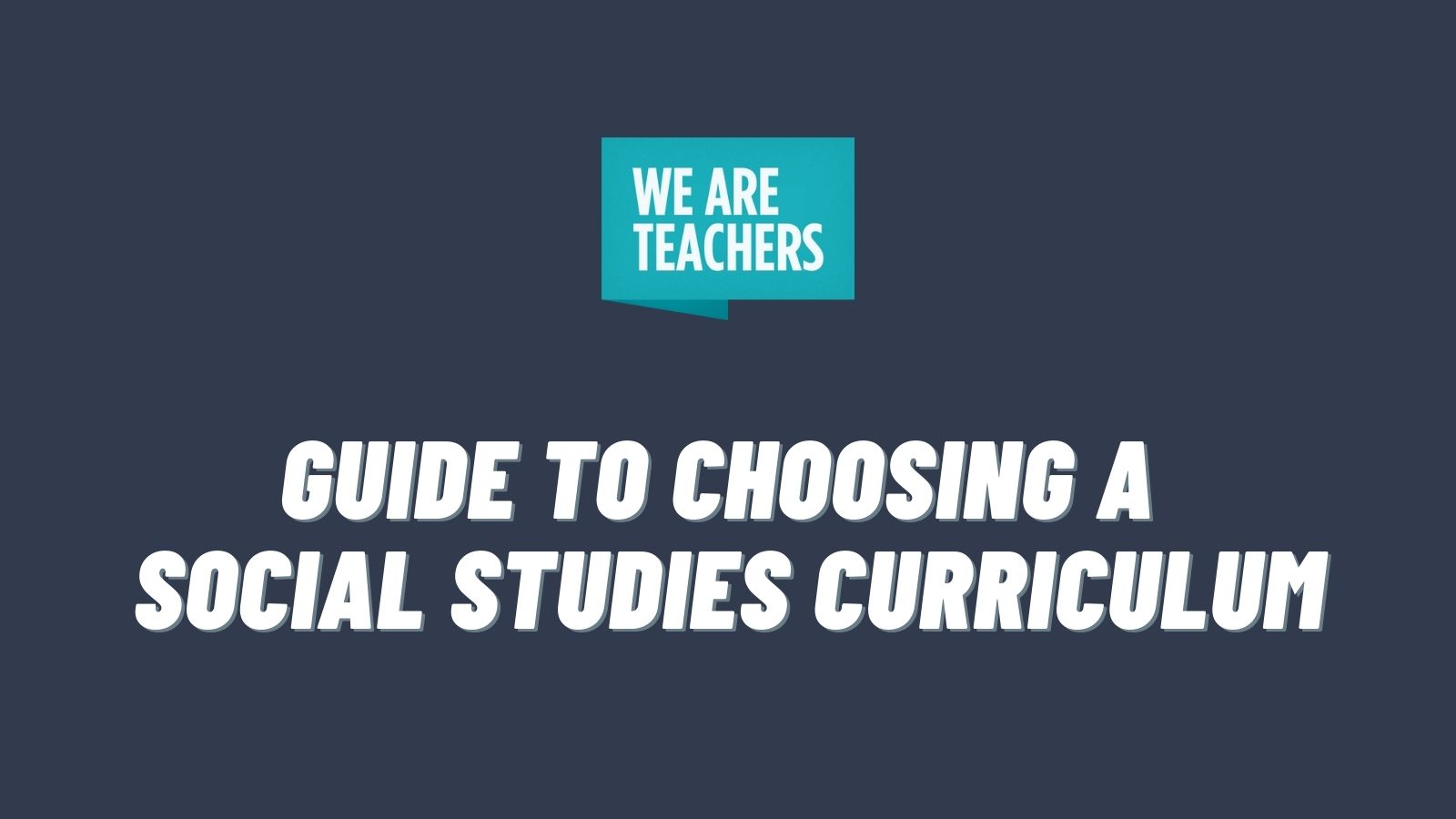Social studies make up a major portion of the school curriculum, with topics ranging from history to economics, psychology to ethnic studies. In elementary school, most social studies curriculum programs are general, giving students an overview of the subjects they’ll study in more detail later on. In middle and high school, students are more likely to study specific subjects individually. Here’s what to consider when choosing a program, whether you need a general social studies curriculum or one that covers just a specific subject.
What subjects are included in social studies?
This wide-ranging catch-all title can cover any and all of these subjects:
- History
- Geography and Cultural Studies
- Civics, Government, and Law
- Economics
- Psychology
- Philosophy and Ethics
- Anthropology
- Sociology
- Religious and Ethnic Studies
- Women’s Studies
Social Studies Curriculum Must-Haves
Alignment With Standards
Currently, the Common Core standards do not include a separate section for social studies. Instead, they include history as part of the ELA standards for grades 6-12. Many states have developed their own social studies standards, which may be based on the NCSS Social Studies Standards.
Regardless of which standards your school follows, be sure the curriculum you choose supports and aligns with them. In some cases, it may be best to choose a social studies curriculum that’s flexible enough that you can customize it for your specific needs.
Age-Appropriate Content
Most curriculum programs state their recommended ages or grade levels. In elementary school, students usually get a high-level overview of a variety of social studies topics, from history and geography to civics and government. By middle school, social studies curriculum programs become more specific, with deeper dives into individual subjects. Be sure your curriculum is geared toward your students’ age and ability levels, since a high school–level class can have very different subject matter and expectations than one intended for 6th or 7th graders.
Diversity and Inclusivity
Ensure the materials consider issues and topics from a wide range of perspectives. Every student should have a chance to see themselves represented in your social studies curriculum, as well as the opportunity to consider new viewpoints. Choose programs that go beyond a limited Eurocentric view and include multicultural and global events, culture, and contributions.
Engagement and Interactivity
Gone are the days when social studies meant reading a section in a textbook and answering questions about names and dates. Today’s social studies curriculum programs invite interactive participation through activities like service learning and project-based learning. Seek out programs that provide many different ways for students to engage in and out of the classroom, making subjects meaningful and personal.
Higher-Order Critical Thinking
Strong social studies programs emphasize analysis and critical thinking over rote memorization of names and dates. Even young students can learn to compare and contrast events and cultures, consider the impacts of past events on the present and future, and make connections between the subject material and their own lives. Look for curriculum programs that go beyond basic knowledge to help students apply, analyze, and evaluate what they learn.
Multiple Assessment Options
Good student assessment includes formative and summative assessments, to gauge learning both during and after a lesson, unit, or course. It also provides multiple types of assessments, including tests, essays, projects, presentations, and more. This ensures every student can demonstrate what they’ve learned, even if they’re not strong test-takers or writers. Take time to review the assessment options offered by the programs you’re considering.
Differentiation for Multiple Learning Styles
As every teacher knows, different students have different learning styles. Some are at their best when reading and writing their responses. Others do better listening to audiobooks or watching videos, then responding orally. Consider the ways a curriculum presents information, and ensure it will give all learners an equitable chance to succeed.
Compatible Teaching Approach
How does your school approach teaching and learning? Is it a more traditional approach, with an emphasis on facts and information? Or do you prefer an inquiry-based approach, in which students explore and develop their own understanding of subject matter? Are you interested in interdisciplinary approaches that will connect social studies topics with other subjects like science, literature, and the arts? Define your desired teaching and learning methods before choosing a social studies curriculum.
Social Studies Curriculum Red Flags To Avoid
Inaccurate or Outdated Information
Does the American history book end at the Vietnam War and consider the Cold War “current events”? Do the maps still show Sudan as one country instead of showing it split into two? The world is always changing, so of course your social studies curriculum can’t be completely up-to-date. But if you’re choosing a new curriculum, pick one that’s been recently updated, and check to see if it’s been reviewed for accuracy.
Bias and Lack of Inclusivity
In the last decade, many attitudes have shifted dramatically (especially regarding historical perspectives), and your social studies program should reflect that. For instance, look for texts that take a balanced view of someone like Christopher Columbus, framing him in the larger context of colonialism rather than simply painting him as a hero who “discovered” America. The key to meaningful inclusivity is to seek out curriculum programs that embrace multiple perspectives, especially those that have been minimalized or suppressed in the past.
Lack of Primary Sources
Guarantee your chosen program meets standards of academic rigor by citing credible and up-to-date primary sources. It should also encourage students to explore primary sources themselves, such as speeches, diaries, photographs, video, and letters. Prioritize programs that develop media literacy by teaching students to recognize biased sources, and how to find alternative objective primary sources instead.
Overemphasis on Memorization Instead of Analysis
For many years, learning subjects like history or geography meant memorizing borders, populations, dates, and other statistics. Today, though, we recognize that information like that is best when it’s used to help students analyze, think critically, and apply what they’ve learned to their own lives and the world around them. It’s OK for a curriculum to place some emphasis on knowing the order of events and the time period when they took place. But if all it asks students to do is memorize names, dates, and statistics, give it a pass and look for one with more emphasis on higher-order thinking.
Social Studies Tools and Supplemental Materials
Social studies is a wide-ranging subject, with lots of potential supplemental tools and materials. Here are some you may need, depending on the subject/s your curriculum covers.
- Digital resources: Best Social Studies Websites for the Classroom
- Globes and maps: Fun Light-Up Globes for the Classroom
- Supplemental texts: Best History Books for Kids
- Documentaries and movies: Fantastic Historical Movies To Share With Students
- General supplies: Awesome Supplies for Elementary Social Studies
- Free printables, slides, activities, and more: We Are Teachers Social Studies Resources
What tips do you have for choosing the best social studies curriculum? Come share ideas and ask for advice in the We Are Teachers HELPLINE group on Facebook!
Plus, meet 5 Teachers Who’ve Had Their Classroom Materials Challenged (and How They Responded).


